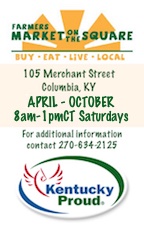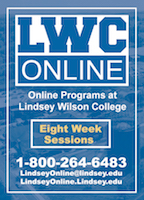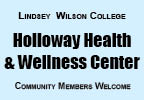| ||||||||||
Dr. Ronald P. Rogers CHIROPRACTOR Support for your body's natural healing capabilities 270-384-5554 Click here for details 


Columbia Gas Dept. GAS LEAK or GAS SMELL Contact Numbers 24 hrs/ 365 days 270-384-2006 or 9-1-1 Call before you dig Visit ColumbiaMagazine's Directory of Churches Addresses, times, phone numbers and more for churches in Adair County Find Great Stuff in ColumbiaMagazine's Classified Ads Antiques, Help Wanted, Autos, Real Estate, Legal Notices, More... 
|
Tom Chaney, 19 September 2010: The Plague of 1918 Of Writers and Their Books No. 270, 19 September 2010. Book Review The Great Influenza: The Epic Story of the Deadliest Plague in History by John M. Barry The next earlier Tom Chaney review, This Wheel's on Fire: Levon Helm and the Story of the Band, by Levon Helm with Stephen Davis By Tom Chaney Email: Tom Chaney bookstore@scrtc.com The Plague of 1918 For several years we kept a permanent search on an internet auction site for Horse Cave items. Some real treasures have come our way. One of the most interesting was a packet of letters written by a merchant of this place to his daughter off in college in the fall of 1918. For the most part the letters relay information about family and about folks she would have known in the town. Generally he wrote in the late afternoon -- always in a rush to get the letter to the post office. Occasionally he was too late for the post office and had to carry the letter to the railroad depot to get it on the last train. Those letters carried the postmark "RPO" for Railway Post Office -- sorted and cancelled on the train. As fall began to edge toward winter, he began to recount illness and death as the influenza epidemic began to lay waste to Horse Cave. Along sometime in November 1918 the letters stopped. I thought nothing of that fact, presuming that this was just one bundle that survived for 75 years or more, and lucky we were to have saved those. Sometime later a friend of the same family came to visit. I told her of the letters and what they contained; made her a copy and we spoke specifically of dates. She consulted her family sources and returned to let me know that the reason the letters stopped was that the father contracted influenza and died just after the last letters were sent. This brought vividly home the tragic immediacy of the devastation of the plague which swept the nation and world as World War I wound to a close. Of course, all that leads into a discussion of a book I been reading. John M. Barry wrote brilliantly of the 1927 Mississippi River flood in Rising Tide some few years ago. His latest book is The Great Influenza: The Epic Story of the Deadliest Plague in History [Penguin Books, 2004]. The outbreak emerged, most likely in the United States, probably in Kansas, spread to military encampments; thence round the world. Between late summer of 1918 and when it faded away in 1920 "it would kill more people than any other outbreak of disease in human history.""Influenza killed more people in a year than the Black Death of the Middle Ages killed in a century; killed more people in twenty-four weeks than AIDS has killed in twenty-four years." It resembled AIDS in that it killed those young adults who had the most to live for. Like the Black Death, priests would drive horse-drawn vehicles through the streets crying for the dead to be brought out -- even in such modern cities as Philadelphia. It is difficult to do justice to Barry's work in this book. In effect he tells several stories, each deserving volumes of its own. In the first place he puts the epidemic in the context of the beginning effort to reform medical education in the United States. Crucial to the story is that of William Welch and the founding of the Johns Hopkins school of medicine in 1893 which trained doctors as scientists. In many of the older institutions doctors completed training without ever seeing a patient. Two of his associates in this reform were Louisvillians, the brothers Flexner -- Simon and Abraham. A second part of the story is the search to discover just what organism was causing thousands to drop with the disease as well as to find a means to stop its spread. Scientists needed to know three things. They needed to understand the epidemiology of influenza -- how it behaved and how it spread. In the past, with plagues such as typhoid, yellow fever, cholera, and others, understanding the epidemiology came before the cure. To understand intervention, scientists needed to know just what it did within the body, the precise course of the disease. What was its pathology? "Third, they needed to know what the pathogen was, what microorganism caused influenza." Only this way could they cause the immune system to prevent or cure the disease. We are all aware from the appearance of avian and other recent strains of flu that the battle is not over. Barry makes the final point that strains of influenza are yet poised to do major damage. The terror of 1918 was that quick death came in a random manner to the healthiest and strongest with terrifying speed. The terror was spread by public officials -- "not by exaggerating the disease but by minimizing it, by trying to reassure." This is a disturbing book, but one hard to put down. To read it is to confront the precarious nature of our hold on the world. Tom Chaney can be found telling stories, planning his next meal, and occasionally selling books at THE BOOKSTORE This story was posted on 2010-09-19 06:01:32
Printable: this page is now automatically formatted for printing.
Have comments or corrections for this story? Use our contact form and let us know. More articles from topic Tom Chaney: Of Writers and Their Books:
Tom Chaney, 12 September 2010: From the Hawks to the Band Tom Chaney, 5 Sept. 2010: Tales of KY Ghosts Tom Chaney No. 267: Galilean Twins Tom Chaney No. 266 review: A.B. Guthrie Tom Chaney No. 14 review: Bank robbery in Hart County Tom Chaney No. 13 review: A Deadly Shade of Gold Tom Chaney No. 265 review: Road to Savoyard Tom Chaney No. 264 review of Theodore Boone: Kid Lawyer Tom Chaney No. 262: The Help Tom Chaney No. 262: Possum Unlimited View even more articles in topic Tom Chaney: Of Writers and Their Books |



|
||||||||
|
| ||||||||||
|
Quick Links to Popular Features
Looking for a story or picture? Try our Photo Archive or our Stories Archive for all the information that's appeared on ColumbiaMagazine.com. | ||||||||||
|
Contact us: Columbia Magazine and columbiamagazine.com are published by Linda Waggener and Pen Waggener, PO Box 906, Columbia, KY 42728. Please use our contact page, or send questions about technical issues with this site to webmaster@columbiamagazine.com. All logos and trademarks used on this site are property of their respective owners. All comments remain the property and responsibility of their posters, all articles and photos remain the property of their creators, and all the rest is copyright 1995-Present by Columbia Magazine. Privacy policy: use of this site requires no sharing of information. Voluntarily shared information may be published and made available to the public on this site and/or stored electronically. Anonymous submissions will be subject to additional verification. Cookies are not required to use our site. However, if you have cookies enabled in your web browser, some of our advertisers may use cookies for interest-based advertising across multiple domains. For more information about third-party advertising, visit the NAI web privacy site.
| ||||||||||



















































